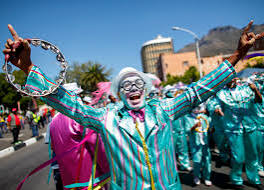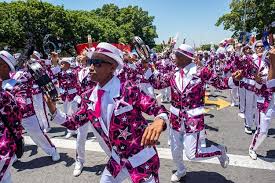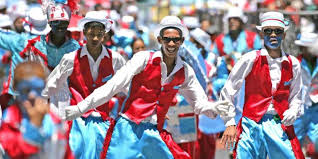Tweede Nuwe Jaar
Tweede Nuwe Jaar, which translates to "Second New Year," is a significant cultural event celebrated annually on January 2nd in Cape Town, South Africa. It is particularly associated with the Cape Coloured community and is a vibrant expression of their history, culture, and identity. This unique festival has deep roots in the city's history and is an iconic event that draws thousands of participants and spectators. The origins of Tweede Nuwe Jaar date back to the 19th century during the colonial period in the Cape Colony. The celebration emerged from the experiences of enslaved people brought to the Cape from various parts of Africa, Asia, and other regions. These slaves were given a day off on January 2nd by their Dutch masters to celebrate and rest after the New Year's Day festivities of their oppressors. Over time, the enslaved and later freed people began to use this day to celebrate in their own unique way, blending African, Asian, and European cultural influences. The tradition continued even after slavery was abolished in 1834, evolving into a significant cultural festival for the Cape Coloured community. Tweede Nuwe Jaar is marked by a vibrant street parade known as the Kaapse Klopse Karnival or "Cape Minstrel Carnival." Participants, known as "klopse" or "minstrels," dress in brightly colored, often sequined costumes and paint their faces in a variety of hues. They march through the streets of Cape Town, playing traditional music, singing, dancing, and performing various acts. The parade typically winds through the historic areas of District Six and the Bo-Kaap, neighborhoods that have been central to the cultural life of the Cape Coloured community. The music played during the parade is an integral part of the festival's identity, characterized by the use of banjos, drums, trumpets, and other instruments. The songs are often performed in a style called "Ghoema," which is distinctive to Cape Town. The rhythms and melodies reflect the multicultural influences of the community, drawing from African, Indonesian, Indian, and European musical traditions. Tweede Nuwe Jaar is more than just a festive celebration; it is a powerful expression of cultural identity and resilience. For the Cape Coloured community, the event is an affirmation of their unique history and heritage, particularly in the face of the cultural erasure and marginalization experienced during the apartheid era. The festival serves as a living reminder of the community's ability to maintain and celebrate their cultural traditions despite past adversities. In contemporary Cape Town, Tweede Nuwe Jaar has grown to include a broader audience and participants from various backgrounds. While it remains deeply rooted in the Cape Coloured community, the festival now attracts tourists and spectators from around the world. The event is also a significant economic driver, providing opportunities for local businesses and artists. Despite its popularity, Tweede Nuwe Jaar has faced challenges, including issues related to commercialization and debates over its cultural appropriation. However, it remains a cherished tradition that continues to evolve while staying true to its roots as a celebration of freedom, community, and cultural pride.







